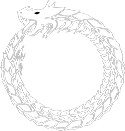I’ve always found it useful to define terms. “Mindset” is a fuzzy term. What does it mean? Poll any number of combat practitioners — military, law enforcement, combat athletes — and you’ll get as many different answers as you have people.
I don’t think there’s one generic descriptor that applies to “mindset” — though I’ve been lazy in discussing it as though there were.
Here’s a couple of random chunks that I think *may* add up to a consensus definition:
There’s those aspects of mental training that relate specifically to enhancing performance. These might include visualization, mental rehearsal and techniques drawn from kinesthetic learning.
There are those aspects of mental training that install attributes: willingness to kill, willingness to engage in personal violence in general, ability to recognize and manage stress, situational awareness.
And then there’s that training that enhances control of the physiology in the mind/body matrix: autogenics breathing and psycho-physiological state management (or access).
For a long time, the approach for training mental attributes in combat focused on “toughening” — the mind, the body, through harsh and rigorous training. I wonder if that in fact actually trained that attribute, or uncovered it in those who already had it. (See previous post that touches on selection processes).
Something I focused on early on was identifying those individuals who had “it” — that amalgam of attributes and abilities listed above — and modeling them on the basis that recreating the physiology they displayed would help coach an novice learner *faster* into the desired end-state. Lots of previous work on this, especially in sports psychology and the “modeling” process as developed by Bandler and Grinder in the evolution of NLP.
So my approach was focused on detailed study of high performers and then parsing out what they were actually doing (as opposed to what they reported they were doing, a nuance lost on some) and figuring out ways to install that in training. I had the benefit of some excellent training in analyzing and evaluating body language and physiological response, as well as utilizing elicitation technique to evoke certain physiological states.
I once coached a member of the South African Olympic rifle team, an extremely experienced military sniper. He started to tell me about his problem, and I had him stop, and just go through his shooting sequence while I observed. When I identified his “hitch” I stopped him, corrected it, and he fired the perfect shot that had eluded him. Took 3 minutes start to finish.
He got up, and backed away from me with a very strange look. “That’s bloody witchcraft, oke…” he said.
I don’t think so, but it certainly can appear like that to people without training or experience.
The basis of this approach is that a high performance individual in a certain skill-set has what we need; we just need to study how he or she does it and then parse it out so it can be trained (see my previous post here on how to train the attribute of situational awareness: https://marcuswynne.wordpress.com/2012/06/02/neural-based-training-for-situational-awareness-first-printed-in-swat-magazine/ or else this post here on how to train rapid target discrimination in the peripheral vision field for shooters: https://marcuswynne.wordpress.com/2012/01/25/neural-based-training-training-peripheral-target-discrimination-for-shooters/
So the question that drove my approach was: How do you transfer the cognitive map/strategy/neurological process that comprises that elusive “mindset” into a novice learner? I took the approach of eliciting, modeling and then installing into training those pieces that added up to expert performance. I remember, a long time ago, wishing that the technology would catch up and we could just be like Neo and Morpheus in THE MATRIX and just VR our way into combat skill mastery.
Well, now we can. Kinda. Check out this very recent patent: http://www.google.com/patents/US20110105859 and the work done by www.advancedbrainmonitoring.com.
The technology now exists, available to the public (for the first time), to model the neurology of an expert in real-time, capture it, and then coach (via haptic, auditory and visual clues) a novice learner into the desired psycho-physiological state — the theory being that once in that state, the novice learner will become expert very quickly.
We’ll come back to that part later, but it certainly is interesting, isn’t it?
Have a Happy New Year!

